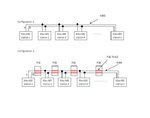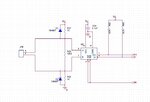Murugesh_89
Full Member level 5

- Joined
- Nov 23, 2012
- Messages
- 266
- Helped
- 7
- Reputation
- 12
- Reaction score
- 6
- Trophy points
- 1,298
- Location
- India
- Activity points
- 3,267
Hi,
I have attached two configurations for max 485 communication..

Out of these two, Which gives the better performance in communication?
In the configuration 2, i heard that the pcb board in between the max 485 stations acts as router which increase the performance and reduce the data loss. Is it true???
Thanks,
Murugesh
I have attached two configurations for max 485 communication..

Out of these two, Which gives the better performance in communication?
In the configuration 2, i heard that the pcb board in between the max 485 stations acts as router which increase the performance and reduce the data loss. Is it true???
Thanks,
Murugesh

